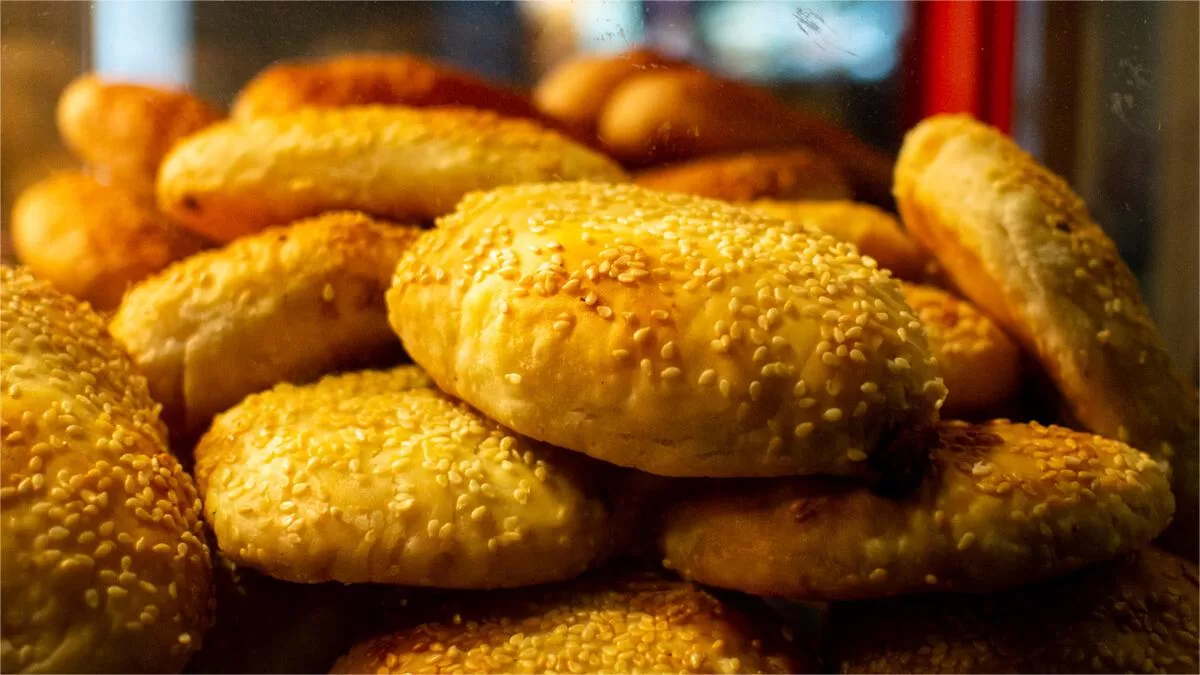Huishan Oil Crisp (惠山油酥), also referred to as “金刚肚脐” (Buddha’s Navel), is a traditional and renowned pastry from Wuxi, Jiangsu, China. Resembling chess pieces in shape, this delicacy is crafted with over 10 ingredients, including peach, green plum, candied melon strips, tangerine peel, sugar, and vegetable oil, among others. The filling is enveloped in a pastry made with fine flour and sesame, creating a delightful combination of flavors – fragrant, sweet, crispy, and fluffy.
Legend has it that during the late Ming and early Qing dynasties, Zhu Shengyu, a descendant of the Ming royal family, arrived at the foot of Huishan Mountain in Wuxi with his family, facing financial difficulties. One day, while wandering into the ancient Hua Mountain Gate, his gaze fell upon the exposed bellies of the buddha, espcially his navel. This sparked the idea of creating a pastry resembling a snack from the imperial court, called “金刚肚脐” or “Buddha’s Navel.” Thus, he decided to make a living by producing this palace treat.
Another legend suggests that this snack originated from vegetarian offerings made by some Buddhist temples at the foot of Huishan Mountain during the late Yuan and early Ming dynasties, catering specifically to pilgrims. With a history of over 600 years, Huishan Oil Crisp gained its alternate name, “金刚肚脐,” from Master Huixing of Huishan Temple during the Qing dynasty.
Regardless of which legend holds true, Huishan Oil Crisp has become a beloved treat that has gained fame far and wide, delighting locals and visitors alike. As production techniques improved and tools advanced, Huishan Oil Crisp has continued to be cherished in Wuxi and its surrounding regions, evolving into a culinary treasure appreciated by generations.


